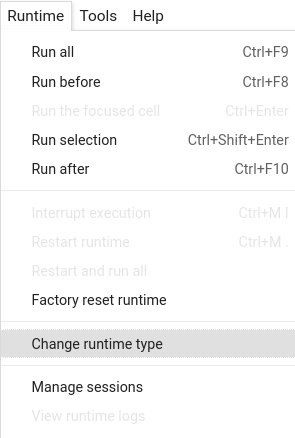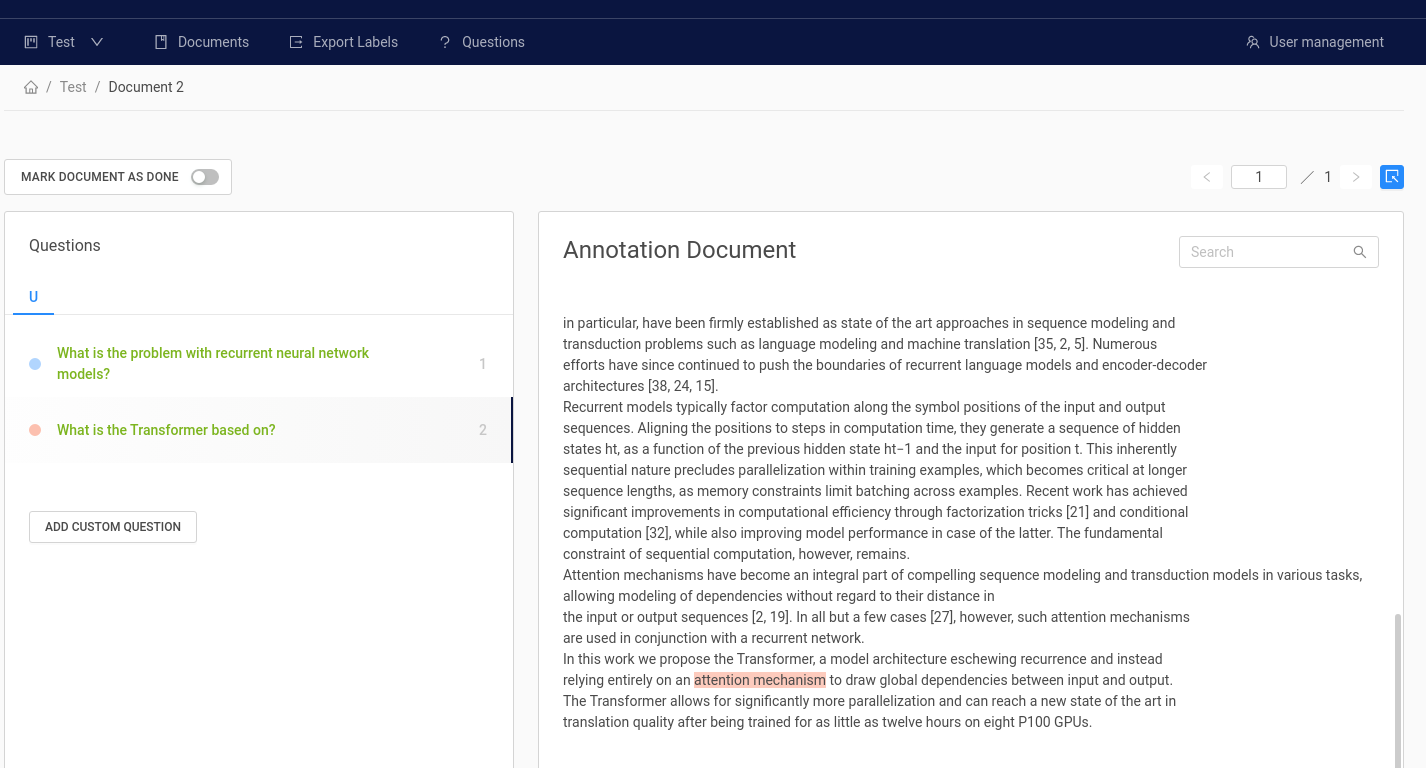Fine-tuning a Model on Your Own Data
For many use cases it is sufficient to just use one of the existing public models that were trained on SQuAD or other public QA datasets (e.g. Natural Questions). However, if you have domain-specific questions, fine-tuning your model on custom examples will very likely boost your performance. While this varies by domain, we saw that ~ 2000 examples can easily increase performance by +5-20%.
This tutorial shows you how to fine-tune a pretrained model on your own dataset.
Prepare environment
Colab: Enable the GPU runtime
Make sure you enable the GPU runtime to experience decent speed in this tutorial. Runtime -> Change Runtime type -> Hardware accelerator -> GPU

# Make sure you have a GPU running
!nvidia-smi
# Install the latest release of Haystack in your own environment
#! pip install farm-haystack
# Install the latest main of Haystack
!pip install --upgrade pip
!pip install git+https://github.com/deepset-ai/haystack.git#egg=farm-haystack[colab]
Logging
We configure how logging messages should be displayed and which log level should be used before importing Haystack. Example log message: INFO - haystack.utils.preprocessing - Converting data/tutorial1/218_Olenna_Tyrell.txt Default log level in basicConfig is WARNING so the explicit parameter is not necessary but can be changed easily:
import logging
logging.basicConfig(format="%(levelname)s - %(name)s - %(message)s", level=logging.WARNING)
logging.getLogger("haystack").setLevel(logging.INFO)
from haystack.nodes import FARMReader
from haystack.utils import fetch_archive_from_http
Create Training Data
There are two ways to generate training data
- Annotation: You can use the annotation tool to label your data, i.e. highlighting answers to your questions in a document. The tool supports structuring your workflow with organizations, projects, and users. The labels can be exported in SQuAD format that is compatible for training with Haystack.

- Feedback: For production systems, you can collect training data from direct user feedback via Haystack's REST API interface. This includes a customizable user feedback API for providing feedback on the answer returned by the API. The API provides a feedback export endpoint to obtain the feedback data for fine-tuning your model further.
Fine-tune your model
Once you have collected training data, you can fine-tune your base models. We initialize a reader as a base model and fine-tune it on our own custom dataset (should be in SQuAD-like format). We recommend using a base model that was trained on SQuAD or a similar QA dataset before to benefit from Transfer Learning effects.
Recommendation: Run training on a GPU.
If you are using Colab: Enable this in the menu "Runtime" > "Change Runtime type" > Select "GPU" in dropdown.
Then change the use_gpu arguments below to True
reader = FARMReader(model_name_or_path="distilbert-base-uncased-distilled-squad", use_gpu=True)
data_dir = "data/squad20"
# data_dir = "PATH/TO_YOUR/TRAIN_DATA"
reader.train(data_dir=data_dir, train_filename="dev-v2.0.json", use_gpu=True, n_epochs=1, save_dir="my_model")
# Saving the model happens automatically at the end of training into the `save_dir` you specified
# However, you could also save a reader manually again via:
reader.save(directory="my_model")
# If you want to load it at a later point, just do:
new_reader = FARMReader(model_name_or_path="my_model")
Distill your model
In this case, we have used "distilbert-base-uncased" as our base model. This model was trained using a process called distillation. In this process, a bigger model is trained first and is used to train a smaller model which increases its accuracy. This is why "distilbert-base-uncased" can achieve quite competitive performance while being very small.
Sometimes, however, you can't use an already distilled model and have to distil it yourself. For this case, haystack has implemented distillation features.
Augmenting your training data
To get the most out of model distillation, we recommend increasing the size of your training data by using data augmentation. You can do this by running the augment_squad.py script:
# Downloading script
!wget https://raw.githubusercontent.com/deepset-ai/haystack/main/haystack/utils/augment_squad.py
doc_dir = "data/tutorial2"
# Downloading smaller glove vector file (only for demonstration purposes)
glove_url = "https://nlp.stanford.edu/data/glove.6B.zip"
fetch_archive_from_http(url=glove_url, output_dir=doc_dir)
# Downloading very small dataset to make tutorial faster (please use a bigger dataset for real use cases)
s3_url = "https://s3.eu-central-1.amazonaws.com/deepset.ai-farm-qa/datasets/documents/squad_small.json.zip"
fetch_archive_from_http(url=s3_url, output_dir=doc_dir)
# Just replace the path with your dataset and adjust the output (also please remove glove path to use bigger glove vector file)
!python augment_squad.py --squad_path squad_small.json --output_path augmented_dataset.json --multiplication_factor 2 --glove_path glove.6B.300d.txt
In this case, we use a multiplication factor of 2 to keep this example lightweight. Usually you would use a factor like 20 depending on the size of your training data. Augmenting this small dataset with a multiplication factor of 2, should take about 5 to 10 minutes to run on one V100 GPU.
Running distillation
Distillation in haystack is done in two steps: First, you run intermediate layer distillation on the augmented dataset to ensure the two models behave similarly. After that, you run the prediction layer distillation on the non-augmented dataset to optimize the model for your specific task.
If you want, you can leave out the intermediate layer distillation step and only run the prediction layer distillation. This way you also do not need to perform data augmentation. However, this will make the model significantly less accurate.
# Loading a fine-tuned model as teacher e.g. "deepset/bert-base-uncased-squad2"
teacher = FARMReader(model_name_or_path="my_model", use_gpu=True)
# You can use any pre-trained language model as teacher that uses the same tokenizer as the teacher model.
# The number of the layers in the teacher model also needs to be a multiple of the number of the layers in the student.
student = FARMReader(model_name_or_path="huawei-noah/TinyBERT_General_6L_768D", use_gpu=True)
student.distil_intermediate_layers_from(teacher, data_dir=".", train_filename="augmented_dataset.json", use_gpu=True)
student.distil_prediction_layer_from(teacher, data_dir="data/squad20", train_filename="dev-v2.0.json", use_gpu=True)
student.save(directory="my_distilled_model")
About us
This Haystack notebook was made with love by deepset in Berlin, Germany
We bring NLP to the industry via open source!
Our focus: Industry specific language models & large scale QA systems.
Some of our other work:
Get in touch: Twitter | LinkedIn | Slack | GitHub Discussions | Website
By the way: we're hiring!